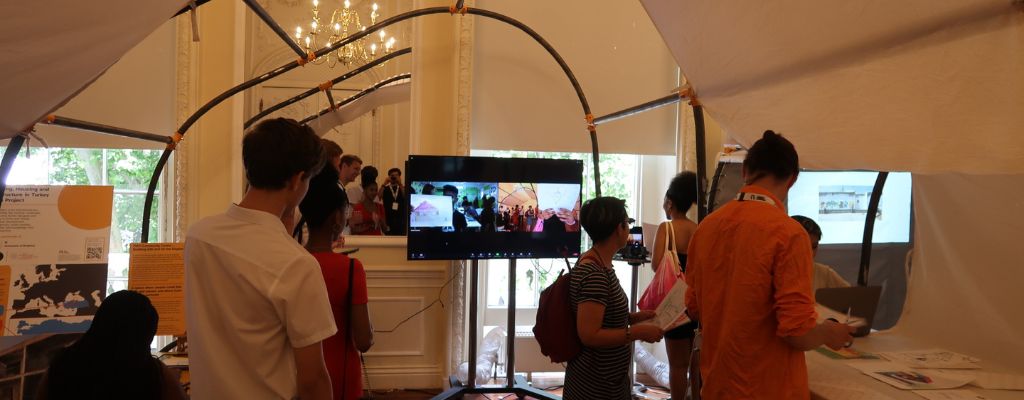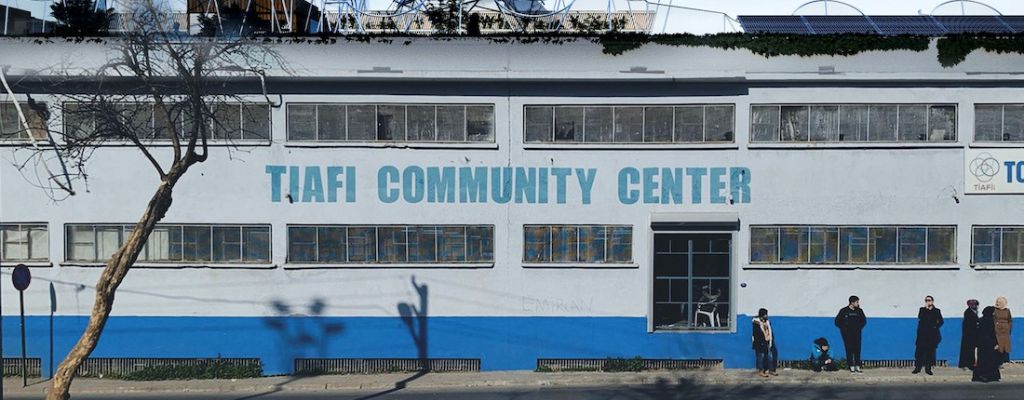Today (20 June) marks World Refugee Day, an opportunity to celebrate the strength and courage of people who have been forced to flee their home country to escape conflict or persecution, and honour refugees around the globe.
More than one per cent of the global population (84 million people), are forcibly displaced from their homes and countries because of conflict, war, poverty, climate change and other reasons. Today, displaced people typically move to cities and towns instead of humanitarian camps, living in dwellings not fit for human habitation, working in low-paid informal settings, with limited assistance from the state, international aid providers.

Visitors on Schools Day and young refugees in Izmir designed elements of the rooftop space via live links. Photo credit: S. Shirke / IDS
This was the backdrop for an innovative exhibition that IDS and our partners took part in last year. The Architecture of Displacement was an interactive display of cross-disciplinary social science and architecture work, which was shown at the flagship British Academy Summer Showcase in June 2022.
The Wellbeing and Housing Infrastructures in Türkiye (WHIT) project aimed to understand informal housing and urban wellbeing in a context of large-scale urban displacement. It was led by IDS in collaboration with the University of Brighton, Yasar University and TIAFI (Team International Assistance for Integration) community centre in Izmir, while also drawing in support from Umeå University, Sweden.

The leisure space now sits atop the TIAFI community centre. Photo credit: R. Mull/ IDS
TIAFI is staffed by Syrian volunteers, and provides numerous community support initiatives for both Syrian refugees and low-income Turkish families, including soup kitchens, rehabilitation for children with war injuries, livelihoods training and childcare support. It is housed in an old shoe factory in a poor neighbourhood of Izmir.
The exhibition featured a prototype structure designed by Umeå University architecture students. It used live links to connect exhibition visitors in London, including hundreds of school children, to clients of TIAFI. Together they interactively designed elements of a rooftop wellbeing space, that has since been constructed. The project thus resulted in a tangible community space, demonstrated the added value of cross-disciplinary collaborations and inspired a new generation of architects and social scientists in Türkiye, UK and Sweden.